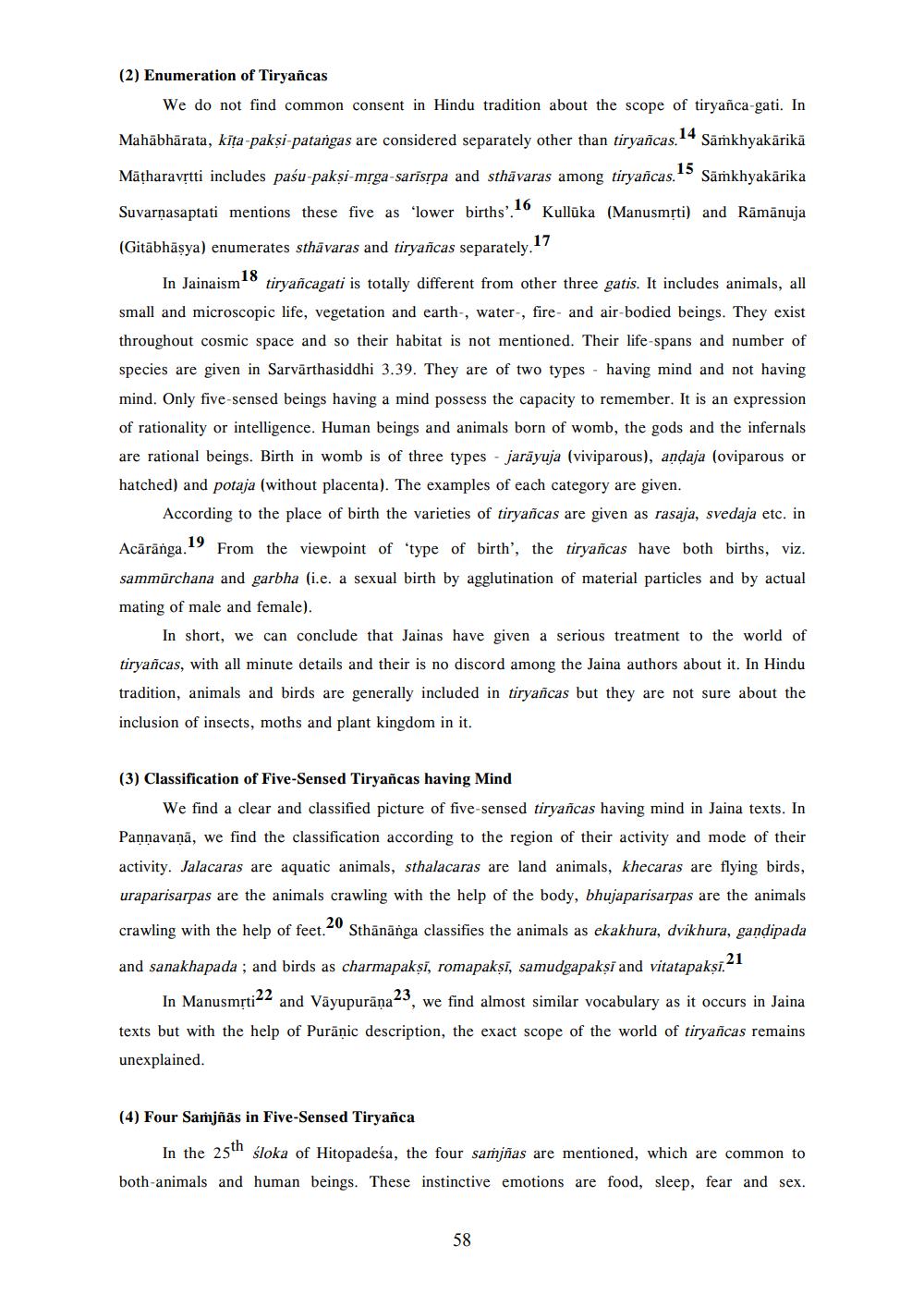________________
(2) Enumeration of Tiryancas
We do not find common consent in Hindu tradition about the scope of tiryanca-gati. In
Mahābhārata, kīta-paksi-patangas are considered separately other than tiryañcas.14 Sāmkhyakārikā Mātharavrtti includes pasu-pakși-mega-sarīsrpa and sthāvaras among tiryañcas." Samkhyakārika
Suvarnasaptati mentions these five as 'lower births'.! Kullūka (Manusmrti) and Rāmānuja
(Gitābhāşya) enumerates sthāvaras and tiryañcas separately.17
In Jainaismo tiryancagati is totally different from other three gatis. It includes animals, all small and microscopic life, vegetation and earth-, water-, fire- and air-bodied beings. They exist throughout cosmic space and so their habitat is not mentioned. Their life-spans and number of species are given in Sarvārthasiddhi 3.39. They are of two types - having mind and not having mind. Only five-sensed beings having a mind possess the capacity to remember. It is an expression of rationality or intelligence. Human beings and animals born of womb, the gods and the infernals are rational beings. Birth in womb is of three types - jarāyuja (viviparous), andaja (oviparous or hatched) and potaja (without placenta). The examples of each category are given.
According to the place of birth the varieties of tiryancas are given as rasaja, svedaja etc. in Acārānga.19 From the viewpoint of 'type of birth', the tiryancas have both births, viz. sammūrchana and garbha (i.e. a sexual birth by agglutination of material particles and by actual mating of male and female).
In short, we can conclude that Jainas have given a serious treatment to the world of tiryancas, with all minute details and their is no discord among the Jaina authors about it. In Hindu tradition, animals and birds are generally included in tiryancas but they are not sure about the inclusion of insects, moths and plant kingdom in it.
(3) Classification of Five-Sensed Tiryancas having Mind
We find a clear and classified picture of five-sensed tiryañcas having mind in Jaina texts. In Pannavaņā, we find the classification according to the region of their activity and mode of their activity. Jalacaras are aquatic animals, sthalacaras are land animals, khecaras are flying birds, uraparisarpas are the animals crawling with the help of the body, bhujaparisarpas are the animals crawling with the help of feet.20 Sthānānga classifies the animals as ekakhura, dvikhura, gandipada
and sanakhapada ; and birds as charmapakși, romapakṣī, samudgapakși and vitatapakși.
In Manusmrti22 and Vāyupurāņa23, we find almost similar vocabulary as it occurs in Jaina texts but with the help of Purāņic description, the exact scope of the world of tiryañcas remains unexplained.
(4) Four Samjñās in Five-Sensed Tiryanca
In the 25th śloka of Hitopadesa, the four samjñas are mentioned, which are common to both-animals and human beings. These instinctive emotions are food, sleep, fear and sex.




